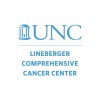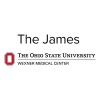
A Study to Learn How Patients With Triple Class Refractory Multiple Myeloma (TCR-MM) Are Treated...
Relapse Multiple MyelomaRefractory Multiple MyelomaMultiple myeloma (MM) is a type of cancer of the white blood cells, called plasma cells. These plasma cells help in fighting infections. TCR-MM is when the cancer does not get treated with the 3 main classes of medicines used to treat this disease. The purpose of this study is to learn about the present clinical practice in Italy and describe the standard of care that will be given to patients with TCR-MM, and their treatment costs, in around 25 centers who treat patients with blood diseases. Standard of care (SoC) is the treatment that is accepted as a proper treatment for a certain type of disease and that is widely used by doctors. The study is seeking for participants who are: 18 years of age or older Confirmed to have MM do not show any response when treated with the 3 main classes of medicines used to treat MM Data of participants who received the TCR treatment between 01 December 2021 and 31 May will be collected. The main data source for the study will be the patient medical record. No clinical visits, examinations, or procedures are required as part of this study.

Follow-up of Patients With Multiple Myeloma in the West-Occitanie Region "Living With a Myeloma...
Multiple MyelomaActually very few real life data are available for patients with multiple myeloma (MM), whereas they're playing a more and more important role in health care decisions. Treatments choice for medical care of patient with MM depends of their age, their general status, their eligibility to high dose treatment (autograft), and also based on cytogenetic risk (standard/high risk). Therapeutic strategies are multiple and based on drugs associations including proteasome inhibitors, immuno-modulators and monoclonal antibodies. Therapeutic medical care objective is to improve quality and response duration through more effective induction schemas, systematic consolidation for patients who have undergone high dose therapy and/or maintenance treatment, ensuring patients safety and well-being in the health care pathway. Quality of life evaluation has to take in consideration disease outcome and secondary effects impact from treatments prescribed for MM. With clinical trials, new therapeutic strategies are proposed with innovative drugs but participants are selected and do not represent all patients with MM. Therefore, there is a large gap between clinical trials and real life data. That's why the CHU Toulouse intends to set up a prospective cohort to evaluate the health care pathway of patients with MM in West-Occitanie region and studies impact of treatments prescribed on the disease and on the patients' quality of life. With this research, standard of care practices for patients with MM will be followed, prognostic scores and clinical trials results will be validated in real life, impact of outpatient support procedure will be assessed (AMA procedure) and sociodemographic/quality of life data will be available for research teams.

²¹¹At-OKT10-B10 and Fludarabine Alone or in Combination With Cyclophosphamide and Low-Dose TBI Before...
Plasma Cell MyelomaRecurrent Plasma Cell Myeloma1 moreThis phase I trial investigates the side effects and best dose of ²¹¹At-OKT10-B10 when given together with fludarabine, alone or in combination with cyclophosphamide and low-dose total-body irradiation (TBI) before donor stem cell transplant in treating patients with high-risk multiple myeloma that is newly diagnosed, has come back (recurrent), or does not respond to treatment (refractory). ²¹¹At-OKT10-B10 is a monoclonal antibody, called OKT10-B10, linked to a radioactive agent called ²¹¹At. OKT10-B10 attaches to CD38 positive cancer cells in a targeted way and delivers ²¹¹At to kill them. Chemotherapy drugs, such as fludarabine and cyclophosphamide, work in different ways to stop the growth of cancer cells, either by killing the cells, by stopping them from dividing, or by stopping them from spreading. Radiation therapy such as TBI uses high energy x-rays to kill cancer cells and shrink tumors. Giving ²¹¹At-OKT10-B10 together with chemotherapy and TBI before a donor stem cell transplant helps kill cancer cells in the body and helps make room in the patient's bone marrow for new blood-forming cells stem cells to grow. When the healthy stem cells from a donor are infused into a patient, they may help the patient's bone marrow make more healthy cells and platelets and may help destroy any remaining cancer cells.

A Study to Investigate the Safety and Clinical Activity of Belantamab Mafodotin in Combination With...
Multiple MyelomaNeoplasms8 moreThis is a phase 1/2, open label, study designed to assess the safety and clinical activity of different belantamab mafodotin doses in combination with daratumumab, lenalidomide and dexamethasone. The study will evaluate different doses of belantamab mafodotin in combination with daratumumab, lenalidomide and dexamethasone in 2 cohorts and will determine the recommended phase 2 dose (RP2D) to be further evaluated for safety and clinical activity in the dose expansion cohort. The RP2D dose will be used for future studies in the transplant ineligible newly diagnosed multiple myeloma setting. Overall, approximately 36 participants will be enrolled in the study. Participant follow-up will continue up to 3 years after the last participant is randomized. The estimated accrual period will be 12 months corresponding to an approximate total study duration of 4 years.

Sequential Therapy in Multiple Myeloma Guided by MRD Assessments
Multiple MyelomaThis research study will determine the proportion of patients with lowest minimal residual disease (MRD) response obtainable after receiving 6 cycles of study treatment. Minimal residual disease is multiple myeloma cells below the level of 1 cancer cell out of 100,000 in the bone marrow. For patients who become MRD "negative" (i.e. less than 1 cancer cell out of 100,000) at the end of 6 cycles of therapy, this study will study if that good response can be maintained with 3 additional cycles of treatment instead of use of autologous hematopoietic cell transplantation (AHCT). For patients who are MRD "positive" at the end of 6 cycles of therapy, this study will answer whether more patients can become and remain MRD "negative" with AHCT plus teclistamab in combination with daratumumab when compared with patients who undergo AHCT followed by lenalidomide (an established anti-myeloma drug) plus daratumumab.

Prospective Research Assessment in Multiple Myeloma: An Observational Evaluation (PREAMBLE)
Multiple MyelomaThe purpose of this study is to assess the clinical effectiveness of all approved multiple myeloma (MM) therapies in the newly-diagnosed (NDMM) and the relapsed/refractory MM (RRMM) settings in real-world clinical practice.

Tissue, Blood, and Body Fluid Sample Collection From Patients With Hematologic Cancer
Chronic Myeloproliferative DisordersLeukemia6 moreRATIONALE: Collecting and storing samples of tissue, blood, and body fluid from patients with cancer to study in the laboratory may help the study of cancer in the future. PURPOSE: This research study is collecting and storing blood and tissue samples from patients being evaluated for hematologic cancer.

Ohio State University Multiple Myeloma and Amyloidosis Data Registry and Sample Resource
Plasma Cell DyscrasiasMonoclonal Gammopathy of Undetermined Significance2 moreThe investigators are researching patients with diseases of their plasma cells in order to improve their quality and length of life. The investigators have created a database of patient information, blood samples, and bone marrow tissue in order to achieve the following three goals: Surveillance: The investigators want to track what treatments patients get or don't get, how effective they are, how they feel, what complications they suffer, how long they stay in remission, and how long they live. Contact: Because myeloma and amyloidosis are rare, less than 700 patients are diagnosed in the state of Ohio each year, patients often feel they don't have accurate information. The investigators want to provide them access to our clinical team (both phone and email consultations, even office visits for patients that can come to Columbus) as well as information regarding informational events pertaining to your disease and local support groups. Research: Because nearly all myeloma and amyloid patients relapse and treatment is eventually unsuccessful, our focus is to develop more effective treatments that not only prolong life, but cure the disease. Periodically the investigators will inform them about clinical trials studying new drugs or treatment paradigms.

Copper 64Cu-DOTA-Daratumumab Positron Emission Tomography in Diagnosing Patients With Relapsed Multiple...
Recurrent Plasma Cell MyelomaPlasma Cell Myeloma1 moreThis pilot phase I clinical trial studies how well copper 64Cu-DOTA-daratumumab positron emission tomography works in diagnosing patients with multiple myeloma that has come back. Diagnostic procedures, such as copper 64Cu-DOTA-daratumumab positron emission tomography, may help evaluate the extent of multiple myeloma in patients prior to the initiation of treatment and ultimately monitor disease status/response during and post treatment.

Physical Activity for Myeloma Autograft Longitudinal Study
Physical ActivityMultiple Myeloma1 morePhysical exercises program is known to improve quality of life, chronical fatigue and appears to be a behavioural recommendation against cancer as primary and tertiary prevention. Nutritional status is also important in cancer patients: a loss of 5% of weight increases the complication risks and decreases survival and the quality of life. Interactions between physical activity and haematological malignancies are less described compared to solid cancers. Methodology and protocols are also heterogeneous. Supervised exercises program improves the physical condition and the quality of life; however there are few randomised studies versus a controlled group. Post autograft evaluation for myeloma patients showed a physical deficit with increased fat mass, but in this particular population physical exercises need to be more explored. This project is a randomised study versus controlled group that evaluates supervised physical exercises program in a homogenous population: patients under-65-years-old with multiple myeloma and who will undergo autologous stem cell transplantation.
